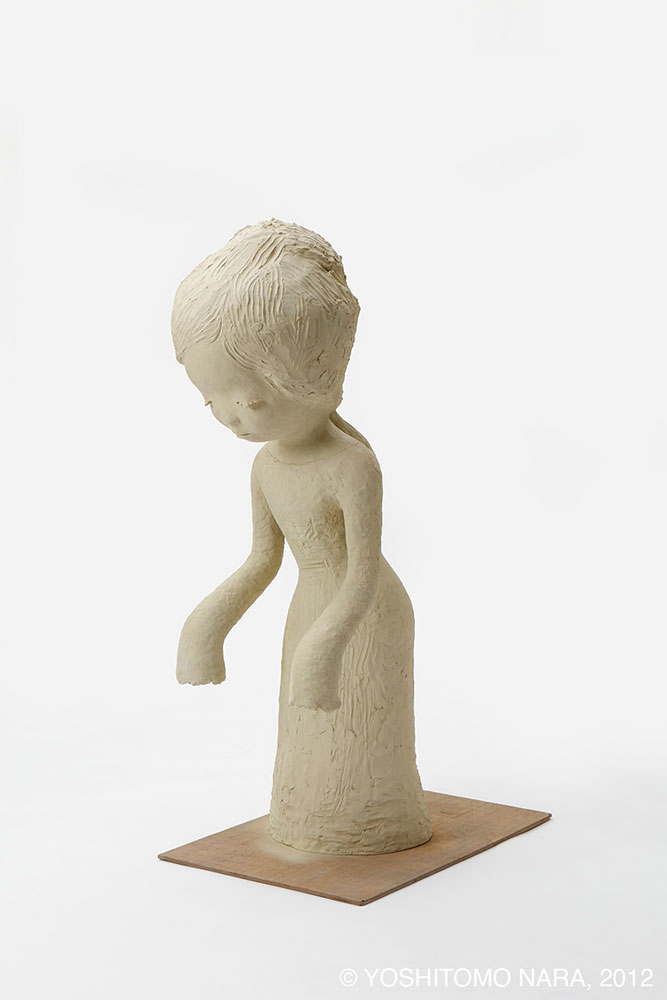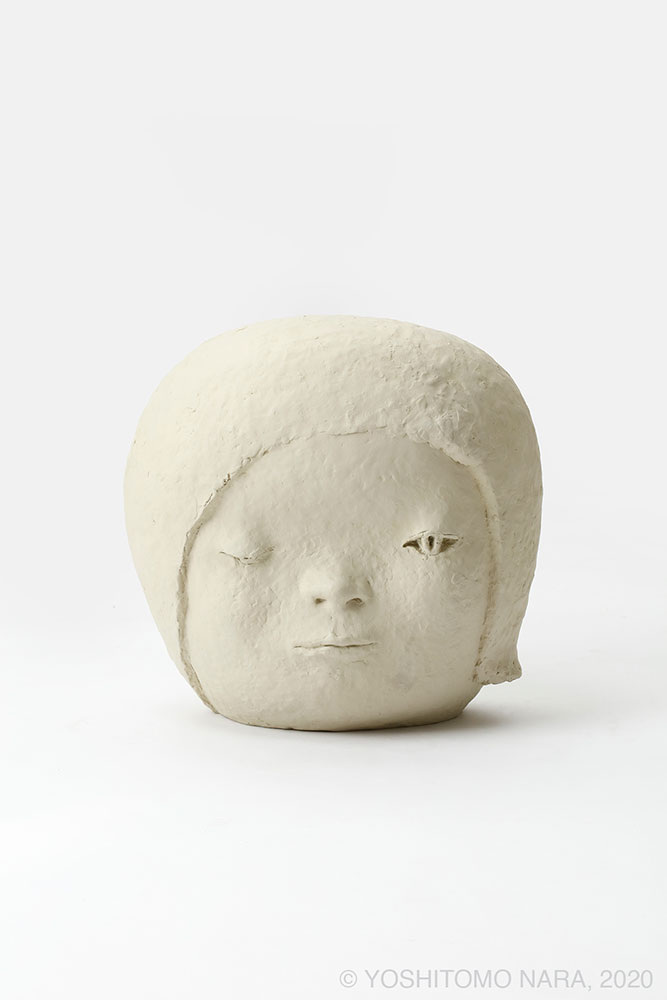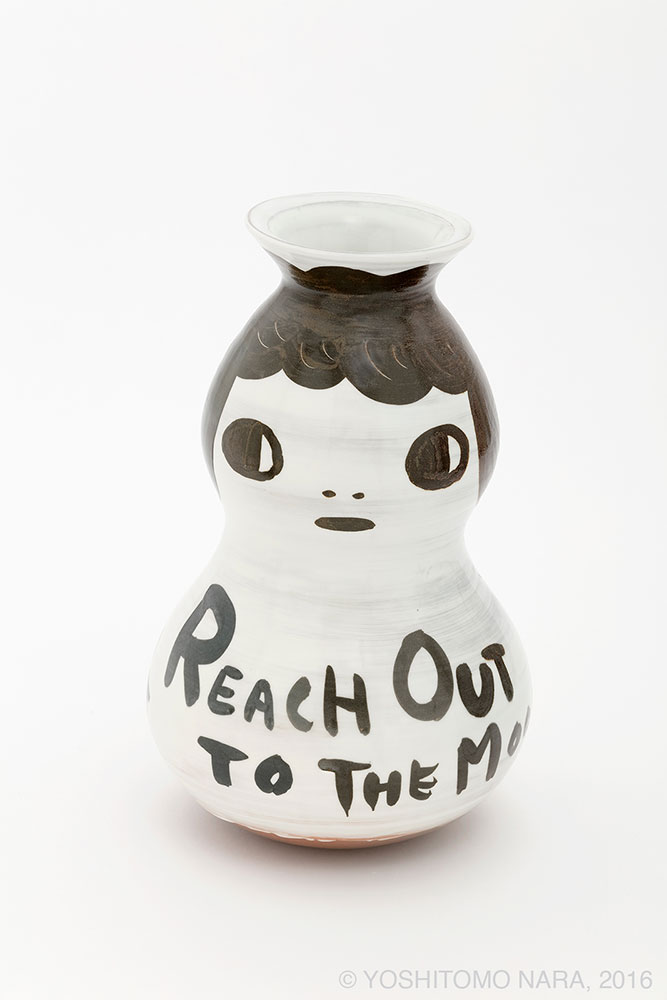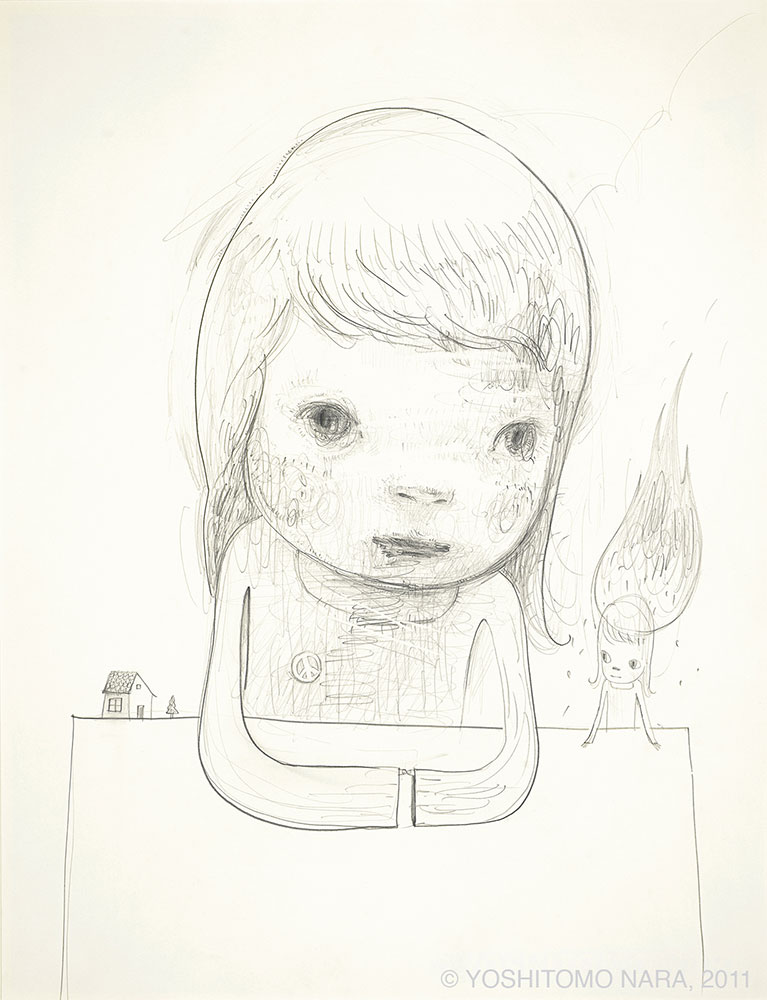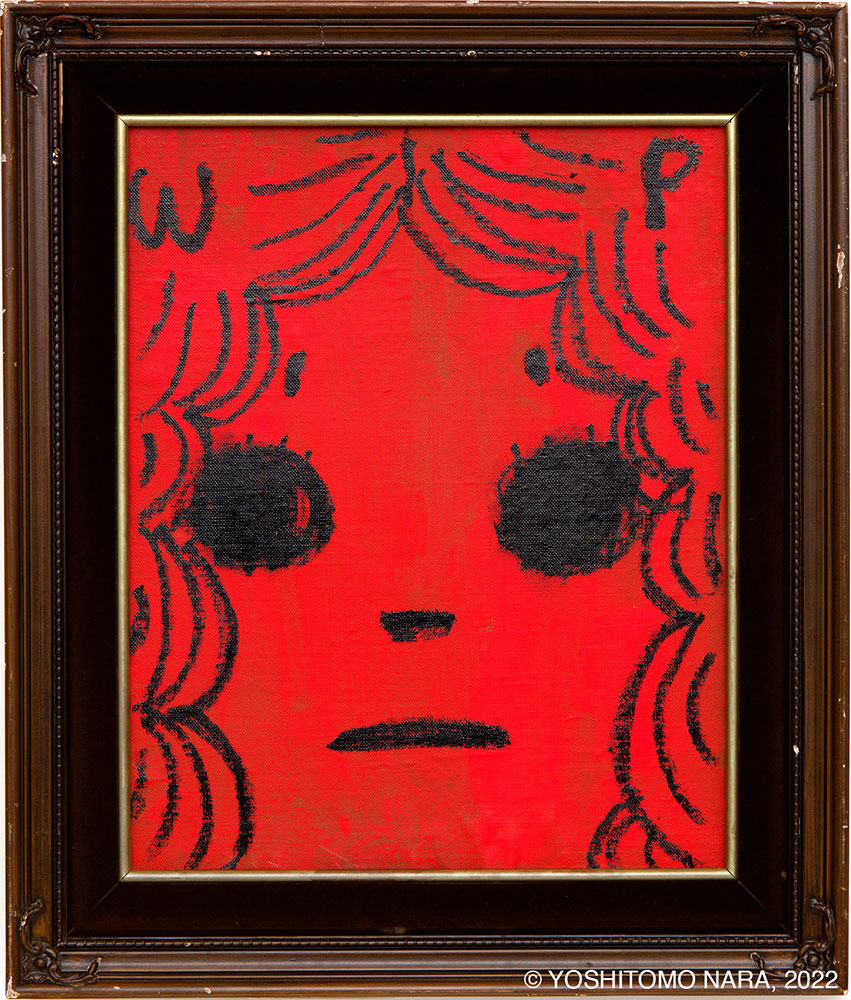PRESENTATION: Yoshitomo Nara-Reach Out to The Moon, Even If We Can’t
 Yoshitomo Nara rose to international prominence in the 1990s for his exquisitely rendered, instantly recognizable portraits of alternately sweet and vicious big-headed figures and melancholic figurative sculptures. Nara’s work in all mediums is the result of his innovative distillation of an enormous array of references and inspirations. These include memories of growing up in rural Northern Japan amidst the lingering presence of World War II; political events of the 1960s and 1970s; the sound and graphics of pop, rock, and folk music; literature; art from Japan’s Edo and modern period; as well as the new expressionism he encountered while studying and living in Germany in the late 1980s and 1990s.
Yoshitomo Nara rose to international prominence in the 1990s for his exquisitely rendered, instantly recognizable portraits of alternately sweet and vicious big-headed figures and melancholic figurative sculptures. Nara’s work in all mediums is the result of his innovative distillation of an enormous array of references and inspirations. These include memories of growing up in rural Northern Japan amidst the lingering presence of World War II; political events of the 1960s and 1970s; the sound and graphics of pop, rock, and folk music; literature; art from Japan’s Edo and modern period; as well as the new expressionism he encountered while studying and living in Germany in the late 1980s and 1990s.
By Efi Michalarou
Photo: Art Gallery of Western Australia aArchive
Spanning works from 2011-2022 the exhibition “Reach Out to The Moon, Even If We Can’t” covers a time in which Yoshitomo Nara has been processing the devastating impact of the Fukushima disaster of 11 March 2011, which saw his hometown region hit by the combined effects of an earthquake, tsunami and nuclear reactor breakdown. In the face of this, Nara found himself unable to make art. He found his way back to his practice through his body as he started making clay sculptures that physically engaged him. From this intuitive process came a renewed focus on three-dimensional forms that then expanded in scale and stretched across other mediums. Taking the guise of (mostly) human heads, the resulting works grew to be a deep and prolonged meditation on the interconnected vulnerability of all life on this planet. Equally, each work is inflected with a kind of cautious optimism that has, in fact, been central to Nara’s work since the 1980s, as he consistently honors the power of individual expression and imagination, especially in the darkest of times. The sculptural works form a series of interrelated islands that span a range of feeling states. Individually and collectively, they demonstrate Nara’s unsurpassed ability to convey emotional nuance with clarity and moving intensity. The feeling of these works is echoed by surrounding drawings, paintings, and ceramics in Nara’s distinctive style, such as “Girl with eyepatch” and “Peace in Your Heart”. Some show the development of specific sculptural works, while others, like “Love or Nuclear”, connect to the anti-nuclear theme he has engaged with for decades now. Nara has referred to his sculptural figures made after 2011 as being, at least in part, witnesses. They observe and offer reactions to the world’s ever-growing catalogue of achievements, disasters and all that happens in between. In response, we might feel observed by them. Yet we might also feel looked over, or past. As much we might intuit an intimate connection between us and them, so too might we be aware that we are being kept carefully, and to varying degrees, just outside their confidence. Nara’s figures calmly stake out their right to individual inviolability, refusing to say everything, to completely explain themselves; they harbour much we will never be able to access. Bodies of water are generative things in Nara’s work; they bring forth energies and entities that we have no choice but to deal with. These are often metaphorical explorations of the fragility of life in the light of our inability to control what comes at us from outside, or indeed inside. Such an unavoidable event came from the Pacific Ocean at 2.46 pm on 11 March 2011 when the tectonic plates 30km below sea level off the northern coast of Japan dramatically shifted. This caused an earthquake that registered 9.0 on the Richter scale and remains Japan’s largest recorded earthquake. An hour later, a tsunami measuring around seven meters flooded the coastal city of Sendai with the water penetrating ten kilometres inland. When the quake hit, the nearby Fukushima Daiichi Nuclear Power Plant shut down automatically. It was, however, flooded when the tsunami arrived; cooling systems were damaged causing several explosions within the plant in the days that followed. As a result, nuclear radiation leaked into the surrounding area, mostly into the Pacific Ocean. While no people died from radiation poisoning, 18,000 lost their lives due to the flooding and many more had their worlds upended. Located only 300 meters from the ocean, Ukedo Elementary School was particularly impacted by the Great East Japan Earthquake: 127 people died, and 27 went missing. Subsequently, the school closed and is now a memorial, preserved in its ravaged state. Nara’s photographs of “Ukedo Elementary School: a blackboard and the clock that stopped at 3:39 on March 11th, 2011” were taken two years after the quake. In a compassionately undramatic manner they reflect a sense of loaded stillness that echoes how such events continue to haunt places and people. In alignment with Nara’s anti-war stance is his anti-nationalist position. Aware of Japan’s own past role as an Imperial and military aggressor, Nara – like other major Japanese artists such as Yoko Ono, Banana Yoshimoto and Haruki Murakami – is suspicious of authority and group identification. His focus on the intricate moment to moment nuances of individual expression, honours the ambivalent and conflicted nature of human subjectivity against the certainties of ideology. His examination of these qualities also speaks back to aspects of Bushido philosophy that considers emotional expression a weakness; it was a perverted form of Bushido that the Japanese army employed at several times in its history. Anti-nuclear themes have been present from the start of Nara’s practice. This is perhaps unsurprising given that Nara grew up close to a US Army base and felt that the second World War (that ended with the nuclear bombing of Hiroshima and Nagasaki in 1945) was still very close; it was hanging over his early life. Importantly, his concerns were never partisan, but completely anti-war. As such, even his most rebellious figures do not swell into dominating entities but instead wield their exposed pain as weapons of conscience.
Photo: Yoshitomo Nara, Girl with eyepatch, 2018, acrylic on canvas, The Labora / Hartland & Mackie Family Collection, © Yoshitomo Nara, Courtesy Pace Gallery
Info: Curator: Robert Cook, The Art Gallery of Western Australia, Perth Cultural Centre, Perth, WA, Australia, Duration: 25/2-26/6/2023, Days & Hours: Mon & Wed-Sun 10:00-17:00, https://artgallery.wa.gov.au/
